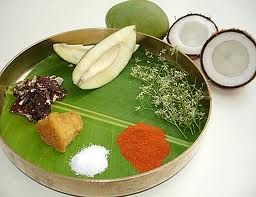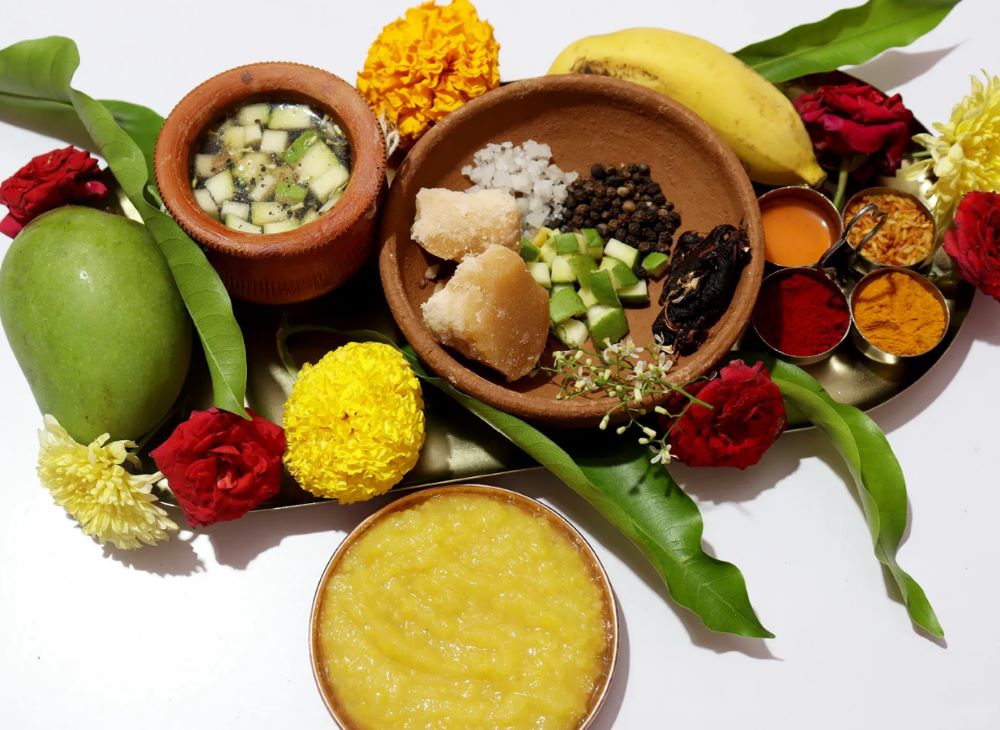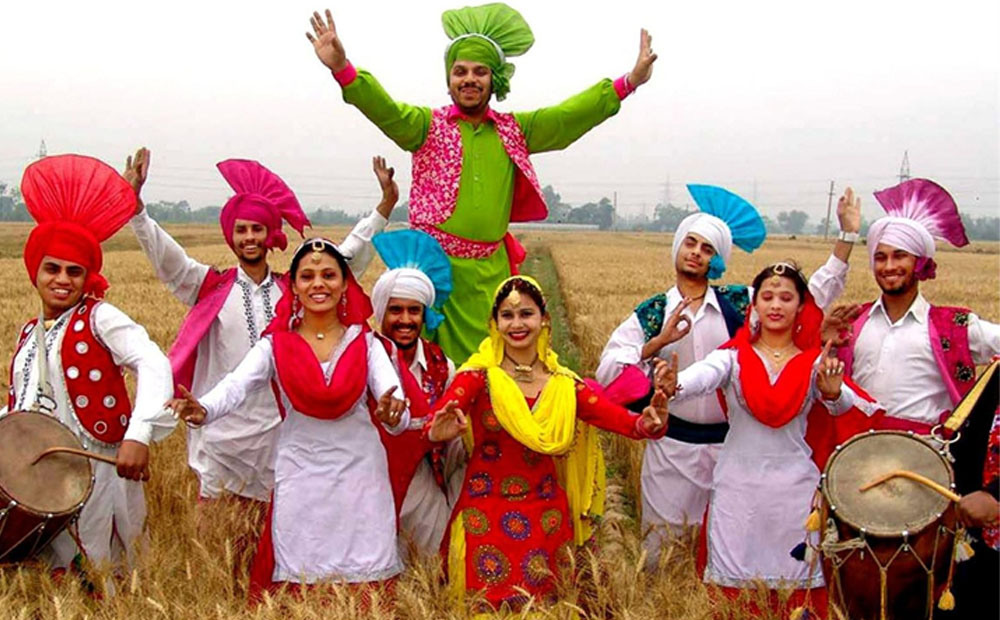Ugadi, the New Year festival celebrated in Andhra Pradesh, Telangana, and Karnataka, marks the beginning of the Hindu lunisolar calendar. Falling in March or April, this auspicious occasion symbolizes renewal, prosperity, and the cycle of life. Among the various traditions associated with Ugadi, food plays a central role, offering a blend of flavors that reflect life’s diverse experiences.
The Significance of Ugadi Pachadi

One of the most iconic dishes of Ugadi is Ugadi Pachadi, a unique preparation that encapsulates the essence of life through six distinct tastes—sweet, sour, bitter, salty, spicy, and tangy. Made with raw mango, neem flowers, jaggery, tamarind, salt, and chili, this dish serves as a reminder that life is a mix of emotions and experiences, from joy to sorrow, all of which must be embraced with gratitude.
Each ingredient in Ugadi Pachadi holds symbolic meaning:
- Jaggery (Sweet) – Represents happiness and joy in life.
- Raw Mango (Sour) – Signifies challenges and surprises that come our way.
- Neem Flowers (Bitter) – Symbolizes difficulties and hardships.
- Tamarind (Tangy) – Represents the unpredictability of life’s experiences.
- Salt (Salty) – Stands for the essential aspects of life.
- Chili (Spicy) – Represents passion, anger, and other intense emotions.
The combination of these flavors in a single dish reflects the essence of human life, teaching the importance of accepting both good and bad experiences with equanimity. Families prepare Ugadi Pachadi early in the morning and consume it as the first meal of the New Year, believing it brings balance and harmony throughout the year.
 Other Traditional Ugadi Foods
Other Traditional Ugadi Foods
Besides Ugadi Pachadi, a variety of festive delicacies are prepared and enjoyed with family and friends:
- Pulihora (Tamarind Rice) – A tangy and flavorful dish made with tamarind pulp, curry leaves, mustard seeds, and green chilies. Pulihora is a must-have dish during festivals, symbolizing prosperity and abundance.
- Bobbatlu / Obbattu / Puran Poli – A sweet flatbread stuffed with a filling of jaggery and lentils, this delicacy is a favorite across South India. The crispy outer layer and soft, sweet stuffing make it a delightful festive treat.
- Payasam / Kheer – A sweet dish made with rice, vermicelli, or lentils, cooked in milk with jaggery or sugar and flavored with cardamom and nuts. Payasam represents prosperity and is an integral part of the Ugadi feast.
- Mango Rice – As raw mangoes are in season during Ugadi, they are widely used to make this tangy and refreshing rice dish, which is both flavorful and aromatic.
- Kosambari – A healthy salad made from soaked lentils, cucumber, and grated coconut, seasoned with mustard seeds and green chilies. It adds a refreshing contrast to the rich festive spread.
- Chitranna (Lemon Rice) – A simple yet flavorful dish made with rice, lemon juice, turmeric, and green chilies, often prepared as part of the festive meal.
Ugadi is not just about welcoming the New Year; it is also a time for reflection, gratitude, and indulgence in traditional delicacies that bring families together. The diverse flavors of Ugadi foods symbolize the varied experiences of life, reminding us to cherish every moment. As families gather to prepare and enjoy these dishes, they reaffirm the festival’s message of harmony, renewal, and joy.
 Similar Festivals Celebrated in Other Regions
Similar Festivals Celebrated in Other Regions
Gudi Padwa – Celebrated as New Year in Maharashtra and Goa.
Cheti Chand – Observed by the Sindhi community as their New Year.
Sajibu Nongma Panba – The New Year celebration of the Manipuri people.
Nyepi – The Balinese Hindu New Year in Indonesia.





